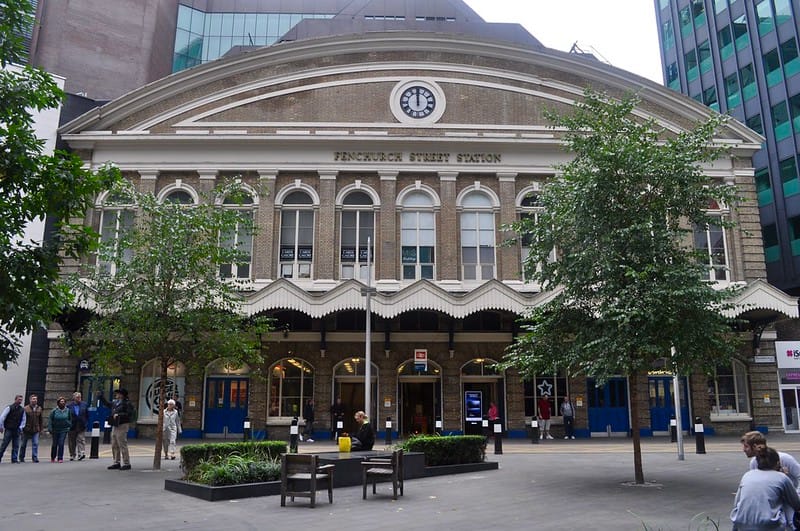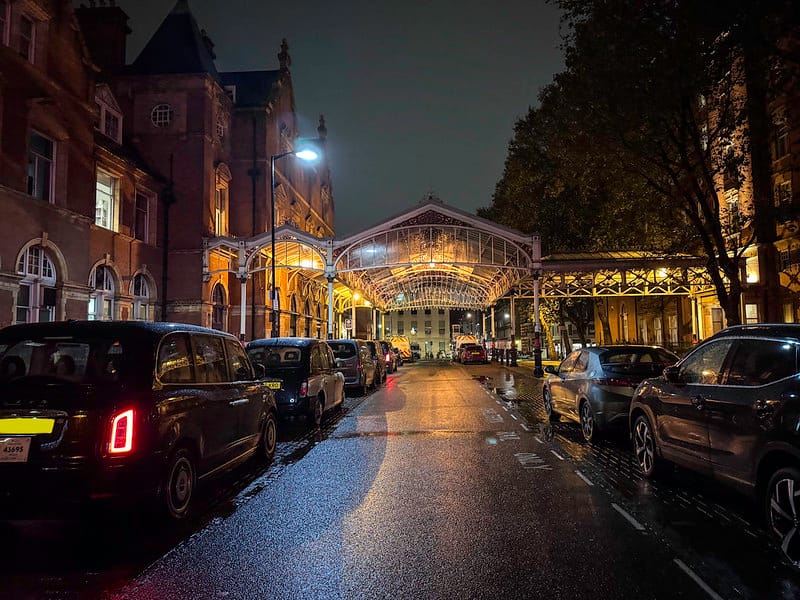Catford Bridge is a two platform intermediate station on the Mid-Kent line. It is located adjacent to (and on a lower level than) the nearby Catford railway station.
The station opened on 1 January 1857 as part of the ‘Mid Kent and North Kent Junction Railway’. The company was soon taken over by the SER.
History
As the rail network evolved over time, several stations often emerged within close proximity to each other. This was especially true in southeast London. Thus it is that Catford Bridge and its twin Catford station co-exist to this day, providing locals and visitors enhanced transportation options and flexibility.
The first major development in this area was the opening of the Mid Kent line at Catford Bridge in 1857. This encouraged the building of houses for the middle classes. By the 1880s parades of shops lined Catford Broadway and a church had been consecrated here.
In the 1860s, two railway companies competed fiercely for traffic, each operating their own line to Victoria. The resulting bitter rivalry led to many financial scandals, and earned the LCDR and the SER the nickname of ‘The Rattle and Smash Railway’.
Despite its modesty, this station was an important stop on the Mid Kent line. Its ‘up’ side platforms were complemented by a trio of northward-facing sidings and a long rolling stock siding that stretched to the ‘down’ side platforms. It was all controlled by an all-timber SER-designed signal cabin positioned at the northern end of the up platform.
Today, this location is served by Thameslink services to and from London Blackfriars and London Cannon Street. The station is in Travelcard Zone 3, and offers connections with the DLR at Lewisham for those heading south to Canary Wharf and the City.
Platforms
The platforms at Catford Bridge are situated between Ladywell and Lower Sydenham stations on the Mid Kent Line. The station is in Travelcard Zone 3 and serves trains between London Charing Cross or Cannon Street and Hayes (Kent) with connections at Lewisham, Petts Wood or Kent House/Clock House. It is a short walk from, and sits on a higher level than, Catford railway station on the Catford Loop line, so interchange on one ticket is possible.
The LC&DR’s modest station building was replaced during the SE&CR era by two large yellow brick single-storey buildings at the up and down end of each platform. These incorporated square stone window frames, a feature which was also evident on the more imposing buildings which were built on the ‘up’ side of the tracks at Ladywell and Beckenham Junction.
The platforms are accessed via a footbridge over the track. A small shelter, a ticket machine and a few lamp-posts are located on each platform. The ‘up’ side has the advantage of being on a slightly raised section of the embankment, which allows for better views of the approaching trains. The ‘up’ platform lost its goods yard in 1968, and the quaint SER-designed timber signal box was removed on 4 April 1971. The control of all signals at the station subsequently passed to the nearby Parks Bridge Junction signal box until the re-emergence of Network South East in 1986.
Side Buildings
Catford Bridge Station is on the Mid-Kent line, serving Hayes line trains to Hayes and lies between Ladywell and Lower Sydenham stations in Travelcard Zone 3. It has brick buildings on both platforms. It was formerly operated by the SER and its successor, Southeastern, which still operate all services that stop here.
The station was built by the Mid Kent and North Kent Junction Railway and opened on 1 January 1857. After the MR&NKJR was taken over by the rival South Eastern and Chatham Railway in August 1866, the station became an SECR station, although it retained its own unique buildings.
Both the ‘up’ and ‘down’ side buildings received major modifications in 1923 as part of the SE&CR’s programme of improving its London suburban stations. These included the extension of the ‘up’ side building by a further 25 feet, and the addition of a new canopy on its ‘down’ end. High-sided yellow brick walls were erected around both platforms, sandwiched in between the station buildings and the road bridge.
The area to the east of the station was a village known as Rushey Green and the opening of the railway encouraged the development of houses here. The Lewisham Board of Works built its offices here in the early 1880s, and parades of shops lined Catford Broadway. The cinemas and a music hall were in the area, and St Laurence’s church was demolished for the Council’s new offices (later named Laurence House). Tommy Steele lived here until 1960.
Ticket Office
The ticket office at Catford Bridge Station is currently closed, but will reopen once contactless payment systems are installed at all Southeastern stations. Until then, passengers can buy tickets using the machines at the platforms or on board trains. Customers can also save money by buying advance train tickets. These tickets can be bought online or in person, and are often cheaper than buying them on the day of travel.
On a typical weekday, there are 77 scheduled train journeys between Catford Bridge and London Charing Cross. Of these, 75 are direct. The average journey time is 17 mins. Thameslink and Southeastern are the main train operating companies for this route.
There are many ways to get cheap train tickets from Catford Bridge to London Charing Cross, including booking in advance or travelling during off-peak times. However, the most affordable option is to book your tickets online with TrainPal. TrainPal can help you find one-way and return tickets, as well as multi-journey tickets.
Most train stations have a range of facilities that can make your trip more comfortable. These include information points, customer help points, and seating areas. Some also have shops and restaurants. If you have a driveway or secure off-street parking space near Catford Bridge Station, you can earn extra income by renting it out to commuters and residents looking for somewhere to park their cars.



